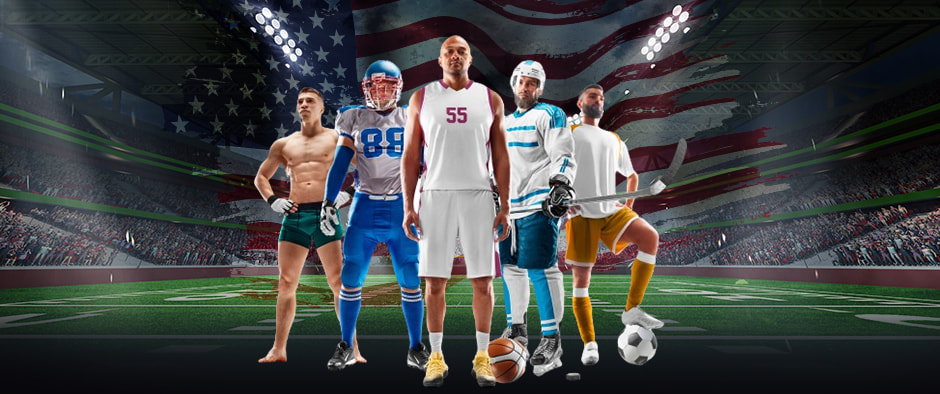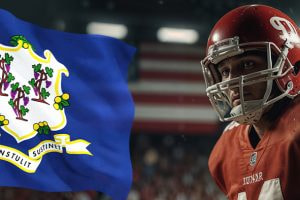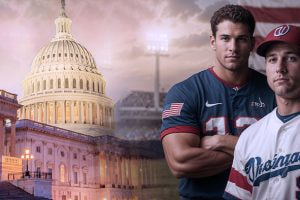Historic American Sports Rivalries and Their Cultural Impact
Immersed in the heartbeat of America, historic sports rivalries are not just competitions; they are emblematic of the nation’s cultural and societal evolution. These rivalries, rooted deeply in history and emotion, reflect and influence American identity, pride, and communal bonds.

Rivalries as Mirrors of American Society
Sports rivalries in America, such as the iconic New York Yankees vs. Boston Red Sox in baseball, are not just about the game; they reflect the societal dynamics at play. These confrontations, filled with a rich history of triumphs and defeats, often mirror the societal and cultural shifts within the nation.
They go beyond athletic competition, symbolizing the struggles and triumphs of regions and communities. For example, the rivalry between the Yankees and Red Sox extends beyond baseball, representing the broader cultural and economic contrasts between New York City and Boston. For the best USA sportsbooks, these rivalries are lucrative, as both sets of fans will often back their team by betting against the opposition.
The Cultural Fabric: Sports Rivalries and Fan Identity
The impact of these rivalries on fan identity and culture is immense. Take the intense competition between the Los Angeles Lakers and Boston Celtics, which has shaped generations of basketball fans. These rivalries forge a sense of identity and belonging among fans, transcending mere sports allegiance to become a part of the cultural fabric of communities. They shape social interactions, community pride, and even local economies, as fans wear team colors, gather in local establishments, and celebrate or commiserate the outcomes of these epic battles.
Economic Impact: Boosting Local and National Economies
The economic implications of these historic rivalries are significant. High-profile games, like those between the Dallas Cowboys and Washington Redskins in the NFL, generate substantial revenue through ticket sales, broadcasting rights, and merchandise. These events draw large crowds, benefiting local businesses and contributing to the vibrancy of local economies. The ripple effect of these games is felt not just in the cities where they are played, but nationally, as they attract viewers from across the country, boosting advertising and sponsorship revenues.
Transcending Sports: Influence on American Culture and Politics
These rivalries transcend the realm of sports, influencing various aspects of American culture, including politics, entertainment, and social issues. Historical matchups like the racially charged games between the University of Kentucky and Texas Western University in the 1960s played a significant role in the civil rights movement, challenging and changing societal norms. Such moments in sports have often mirrored and influenced political and social change, contributing to national dialogues on critical issues.
Iconic Rivalries and Their Societal Significance
- Yankees vs. Red Sox: More than a century-old baseball rivalry reflecting the cultural and economic contrasts between New York City and Boston.
- Lakers vs. Celtics: A storied basketball rivalry that has shaped the identity and culture of fans across the nation.
- Cowboys vs. Redskins: An NFL clash that not only stirs regional pride but also significantly impacts the economy.
- University of Kentucky vs. Texas Western University: A historic college basketball game that played a pivotal role in the civil rights movement.
- USA vs. Soviet Union (Miracle on Ice): A symbol of political and social tensions during the Cold War, transcending the sport of hockey.
Yankees vs. Red Sox
The Yankees-Red Sox rivalry, deeply rooted in the annals of baseball history, extends beyond mere athletic competition. This rivalry symbolizes a cultural and economic tug-of-war between New York City and Boston. Dating back to the early 20th century, key moments like the controversial trade of Babe Ruth in 1919, which many believe cast a multi-decade curse upon the Red Sox, have marked this rivalry. Dramatic games, such as the 1978 tie-breaker and the 2004 ALCS, where the Red Sox overturned a 3-0 deficit, further illustrate the intense and historic nature of this rivalry. This clash is more than a game; it’s a representation of regional pride and historical evolution.
Lakers vs. Celtics
Spanning several decades, the Lakers-Celtics rivalry is a storied chapter in NBA history. It represents not just a clash of basketball titans but also a cultural and lifestyle duel between the East and West Coasts. Iconic players like Magic Johnson, Larry Bird, Bill Russell, and Kareem Abdul-Jabbar have all played pivotal roles in this rivalry. Each game is a showcase of contrasting basketball philosophies and regional identities, making it a magnet for basketball aficionados and a significant contributor to the NBA’s growth and popularity.
Cowboys vs. Redskins
The Cowboys-Redskins rivalry goes beyond the NFL, encapsulating a larger narrative of regional and cultural identity. As two of the most high-profile teams in American football, their games are not just sporting events but also significant cultural gatherings. This rivalry highlights the intense fan engagement and the economic impact these games have, not just in the host cities but across the nation. It’s a rivalry that brings into play deep-seated loyalties and represents a microcosm of American sports culture.
University of Kentucky vs. Texas Western University
The 1966 NCAA basketball championship game between the University of Kentucky and Texas Western University (now UTEP) stands as a defining moment in sports and civil rights history. The victory of Texas Western, with its all-black starting lineup, over the all-white Kentucky team, was more than a sports triumph; it was a bold statement against racial segregation in sports. This game is celebrated for its significant role in advancing the integration of college basketball and its contribution to the broader civil rights movement in America.
USA vs. Soviet Union (Miracle on Ice)
The 1980 Winter Olympics ice hockey match between the USA and the Soviet Union, known as the “Miracle on Ice,” transcends the realm of sports. In a period marked by the Cold War’s political and social tensions, the underdog U.S. team’s unexpected victory over the Soviet powerhouse was seen as a metaphorical triumph of democracy over communism. This game was more than a sporting upset; it became a symbol of national pride and a moment of unity for the American people during a time of international uncertainty and conflict.
Each of these rivalries encapsulates more than just the spirit of competition; they are integral parts of the cultural and historical narrative of American sports, deeply influencing societal norms and national identity.
Sports Rivalries: Catalysts for Social and Political Change
Historic sports rivalries have also been catalysts for social and political change. Events like the 1968 Olympic Games, where American sprinters Tommie Smith and John Carlos raised their fists in a Black Power salute, have had profound impacts on societal conversations about race and equality. These moments have transcended the world of sports, becoming iconic symbols of resistance and change, echoing the sentiments and struggles of broader societal movements.
American Sports Rivalries – Conclusion
Historic American sports rivalries are far more than just games; they are microcosms of American society and culture. They reflect and shape the nation’s identity, influence politics and social movements, and contribute significantly to the economy. These rivalries tell the story of America, capturing its triumphs, challenges, and the ongoing evolution of its diverse society. As such, they remain not just a source of entertainment, but a powerful and enduring part of the American narrative.



